Prater History
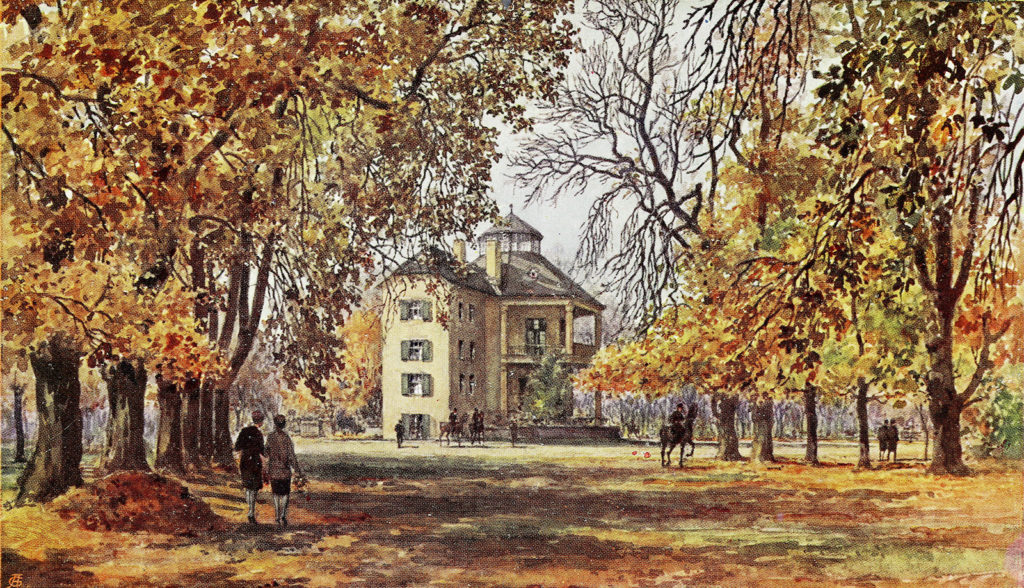
Prater History
The Wurstelprater and the Viennese Prater have a long, varied past – the following summary should give you a good overview. It is illustrated with wonderful, hostorical postcards.
The Viennese Prater was first mentioned in 1162 under the name Pratum in a deed of gift from Emperor Frederick I Barbarossa to Conrad de Prato. Pratum is Latin and means meadow or pasture. In 1403, the area was then referred to as Pratter in a certificate – this spelling will be used in Vienna for a long time.
There Shall Be a Chestnut Avenue
16th century
In 1537, King Ferdinand I ordered the construction of a large avenue of chestnut trees. This was supposed to extend from today’s Praterstern to the then Jägerhaus, which was completed in 1555 at the end of the main avenue. In 1560, the entire area became an imperial hunting ground, where pheasants, deer, wild boar and also foxes were hunted.
No Common Folk Allowed
17th century
In the next century, the Prater was still not open to the public, but the high nobility was finally allowed to enter. The main avenue could be entered by carriage – exclusively – in the month of May, but getting off the carriage was strictly forbidden. Since there were no public places of entertainment at this time, the Stadtgut* – the green area in front of Prater – was used by the Viennese.
The Jolly Hanswurst
In May 1603, Michael Ainöther opened the Prater Wirtshaus in the middle of the Stadtgut*, which had to be enlarged in the summer of the same year due to great demand. Many years later, the former inn had grown into a real amusement area and consisted of several taverns, bowling alleys, simple cabarets, swings and also puppet theaters for the children. In the latter, the funny Hanswurst played the leading role – the Wurstelprater was later named after him.
* The Kleine and Große Stadtgutgasse, which are located in the area between Praterstern and Augarten, are remnants of the former Stadtgut.
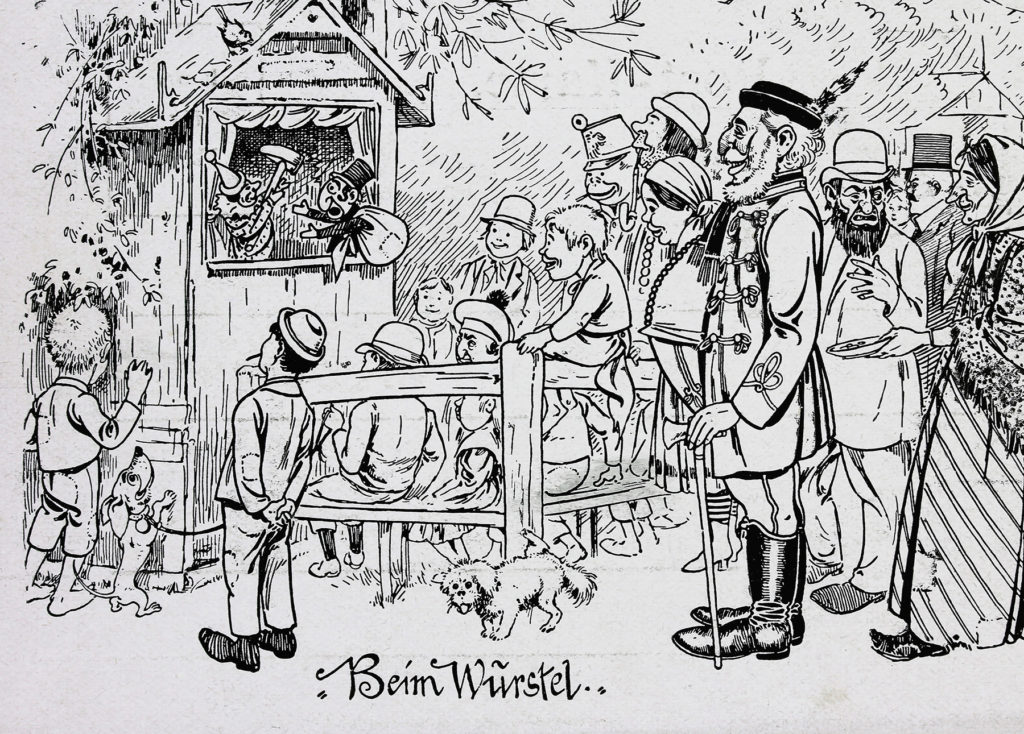
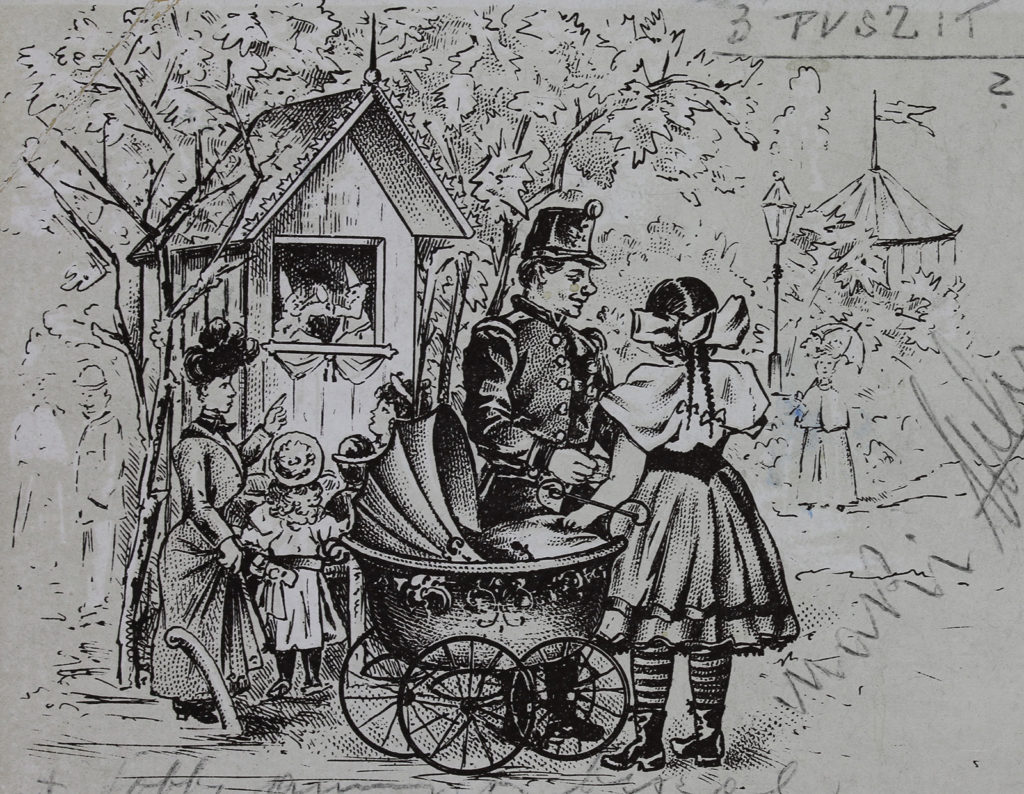
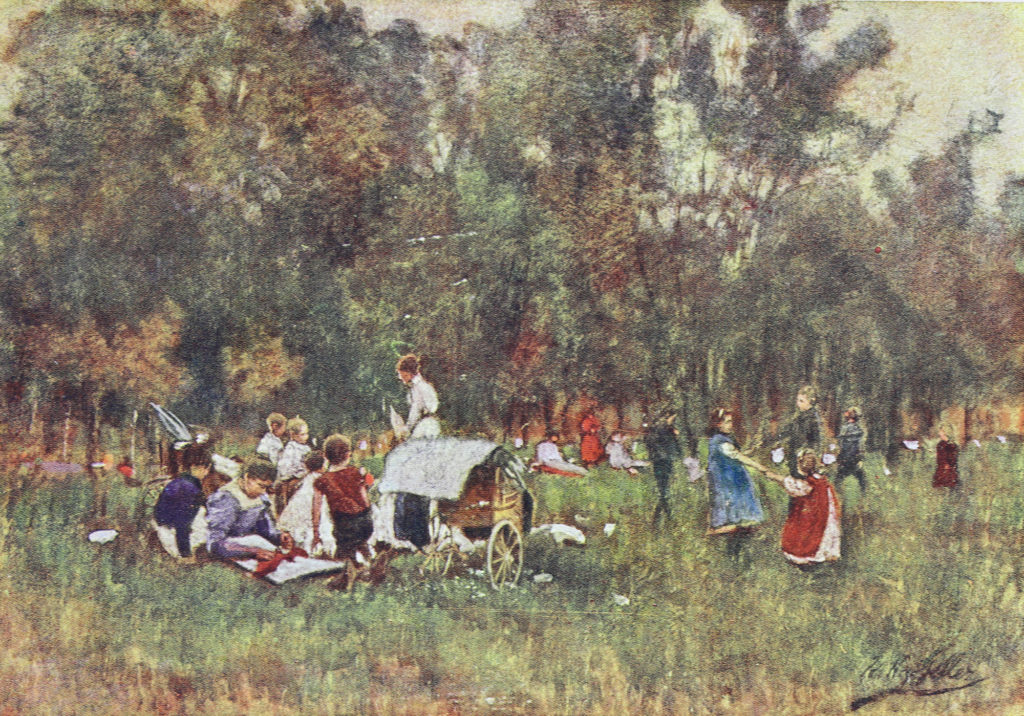
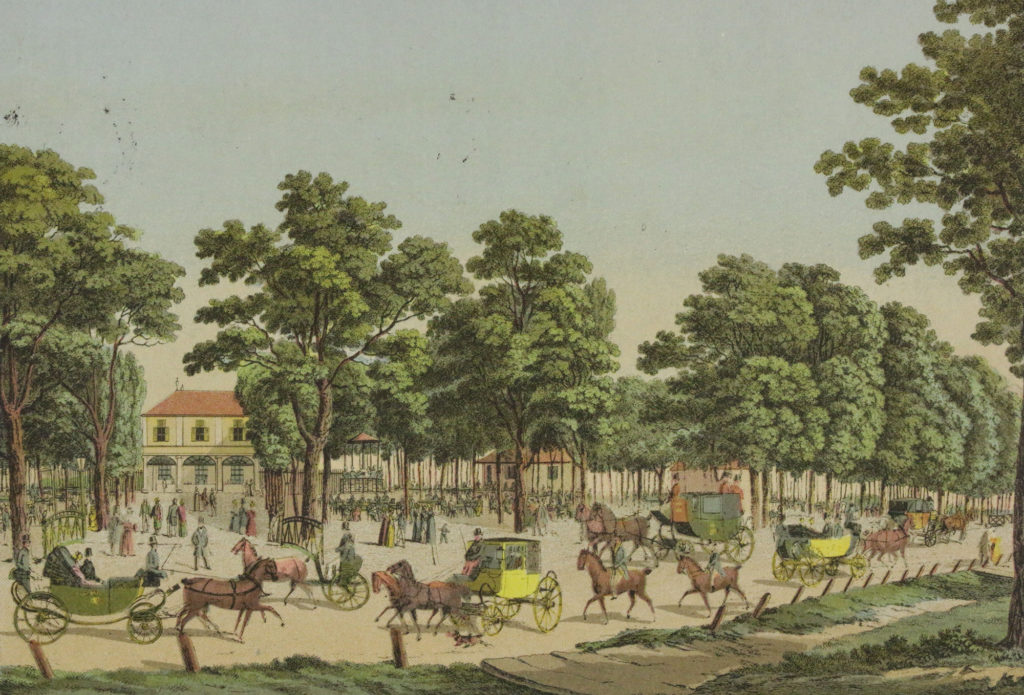
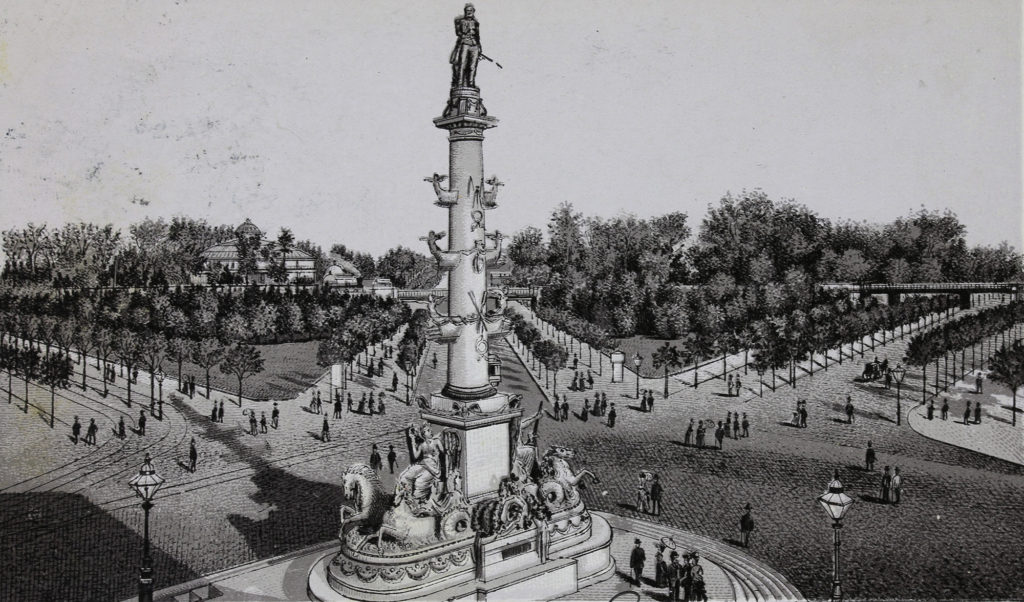
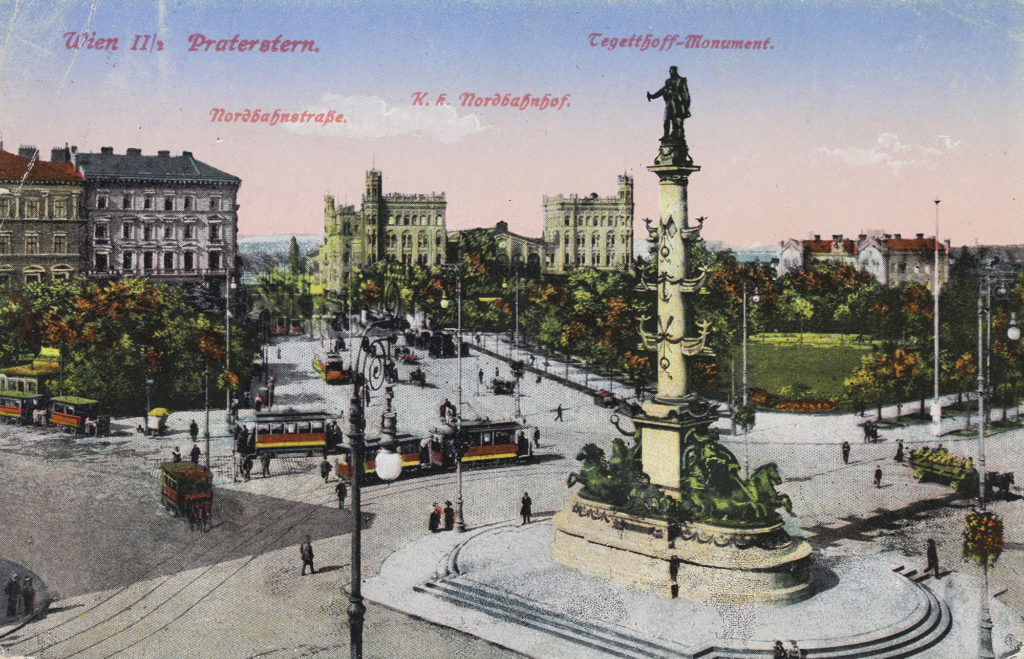
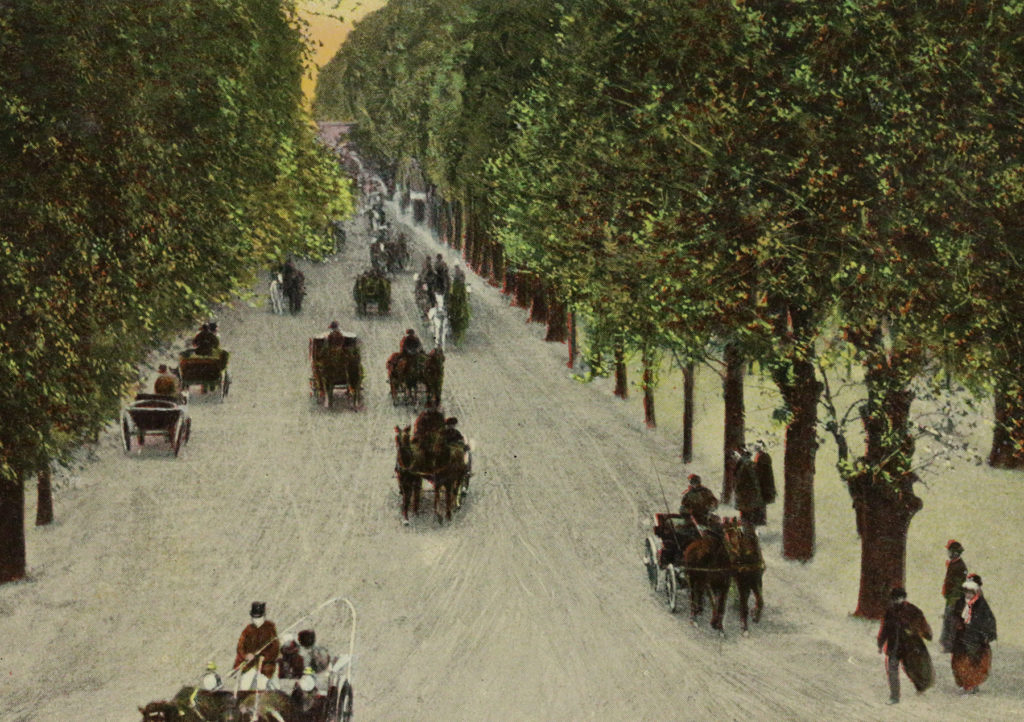
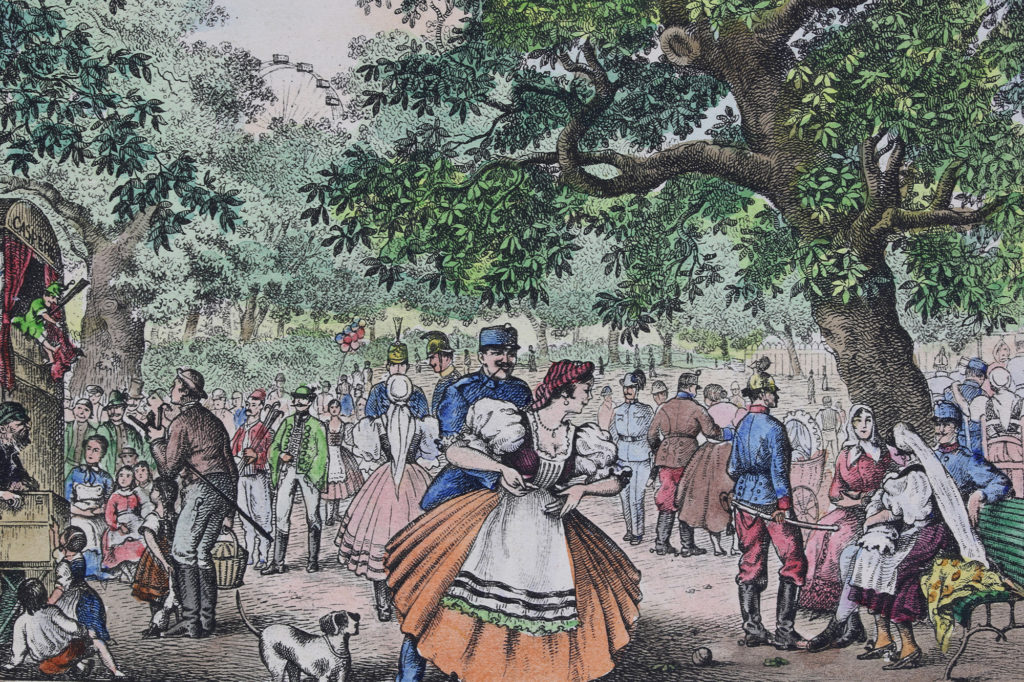
A Recreation Area For All
18th century
As co-regent of Maria Theresa, Emperor Joseph II opened the Prater as a recreation area for all inhabitants of Vienna on April 7, 1766. Only the rearmost part, the so-called Hirschau, remained in imperial possession and was used for breeding deer, noble and fallow deer. When a cavalier pointed out to the emperor that from now on he would have to mingle with the common people, His Majesty replied dryly, “If I wanted to walk around solely among my own kind, I would only be allowed to walk in the imperial crypt.”
From April 19, 1766, in addition to the already existing inns in front of the entrance to the Prater, other businesses – such as wine and beer innkeepers, coffee boilers, gingerbread sellers, meat smelters and even a doughnut baker – were allowed to set up shops, and all of the shops were immediately numbered. This marked the “official” beginning of the Wurstelprater. While it was mainly the simpler citizens, craftsmen, and soldiers who hang around here, the nobility prefered to stroll along the main avenue.
On May 24, 1771, the first fireworks display was set off in Prater by Johann Georg Stuwer. Most of the following fireworks displays took place in the area of today’s Stuwer quarter (named after his family) – up to 25,000 spectators were present each time.
Praterstern
In 1780, Emperor Joseph II ordered the construction of a huge square in front of the Prater – the Praterstern. This made Prater even more accessible from all directions. Two years later, the adjacent Wurstelprater had extended beyond its original outlines. Among the buildings were inns, ring games, shooting galleries, bowling alleys, the Optica Nova – a simple camera obscura (pinhole camera) – and a hut where mechanical birds could be admired.
Prater Becomes a Festival Venue
19th century
On May 1, 1814, the great Viennese Spring Festival took place for the first time. An impressive parade of private and public carriages was celebrated in front of up to 30,000 onlookers. The birthday of Emperor Franz Joseph I and the marriage of Emperor Franz Joseph I to Elisabeth were also celebrated with brilliant festivities in the Prater. Composers such as Eduard Strauss, Hans Makart, and Carl Michael Ziehrer performed in the first, second, and third coffeehouse at numerous folk festivals held by Johann Strauss.
Thanks to technical progress, the entertainment offered in the Wurstelprater became more and more diverse. In the 1840s, Basilio Calafati, born in Trieste, built the first railroad carousel. In 1854 he extended it with the figure of the Great Chinese, which (in the form of a replica – the original was destroyed in the Second World War) still stands today as Calafati in Wurstelprater and has become a landmark. Many showmen and technicians from all parts of the Austro-Hungarian monarchy realized their ideas in Wurstelprater at this time.
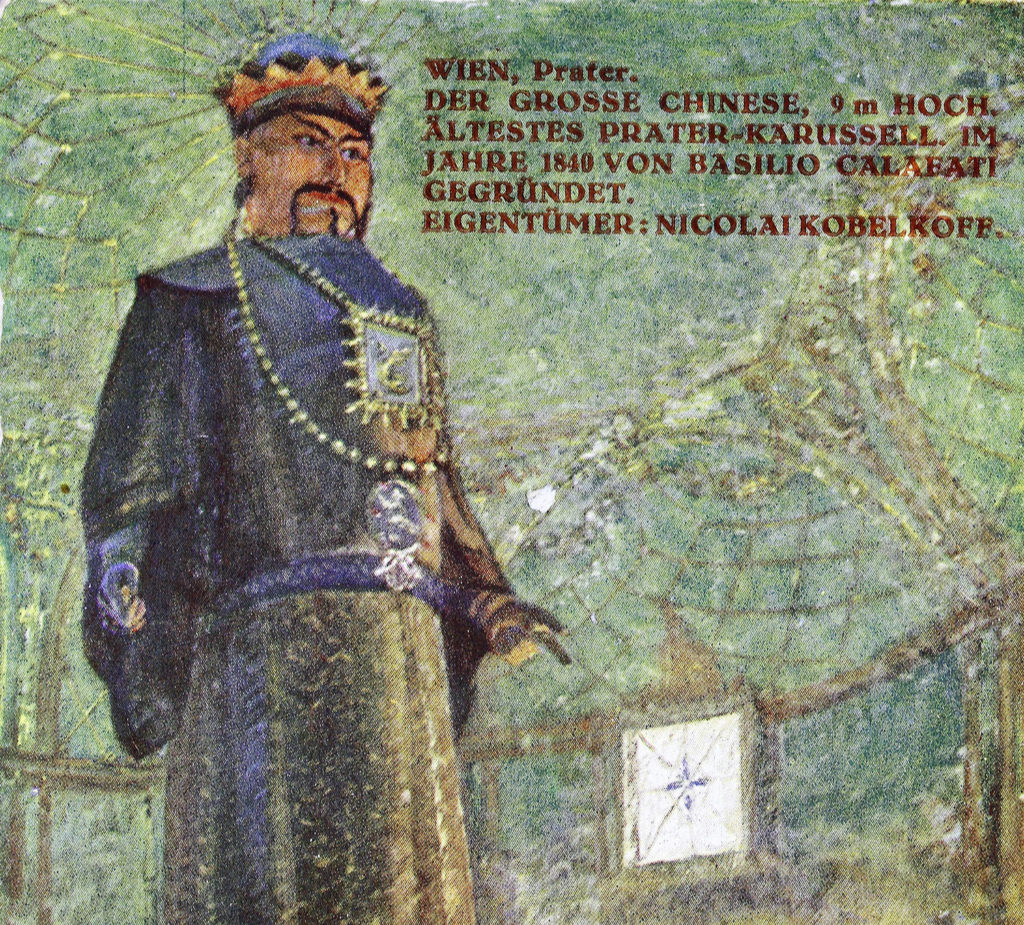
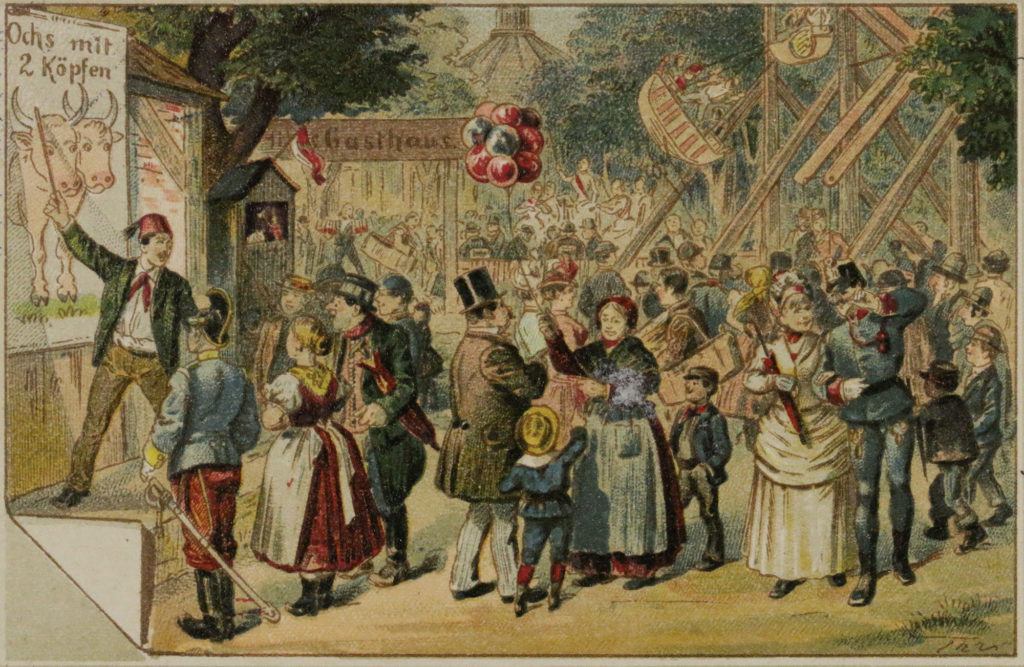
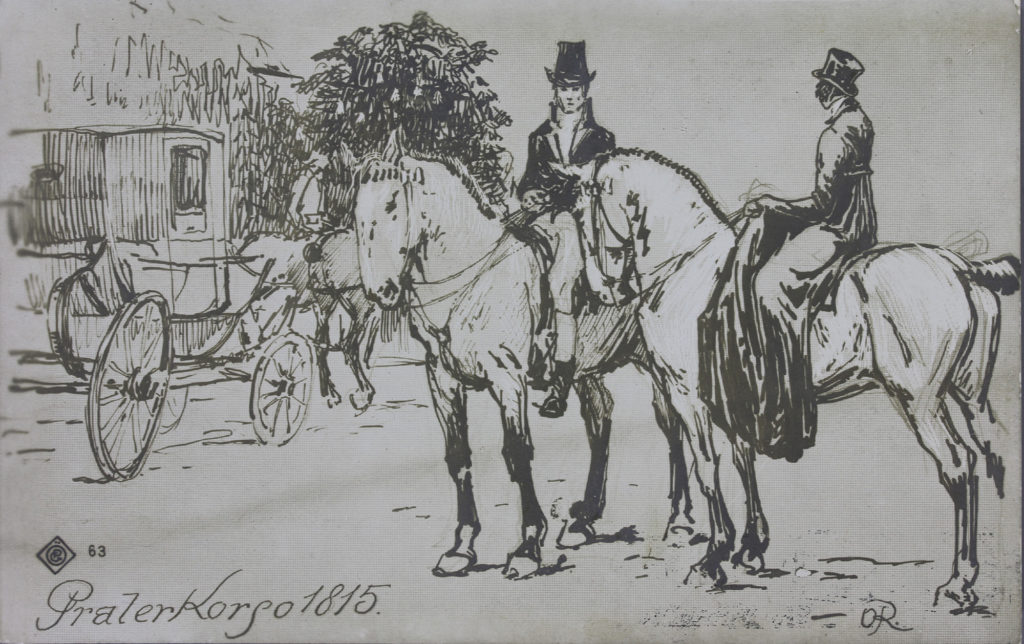
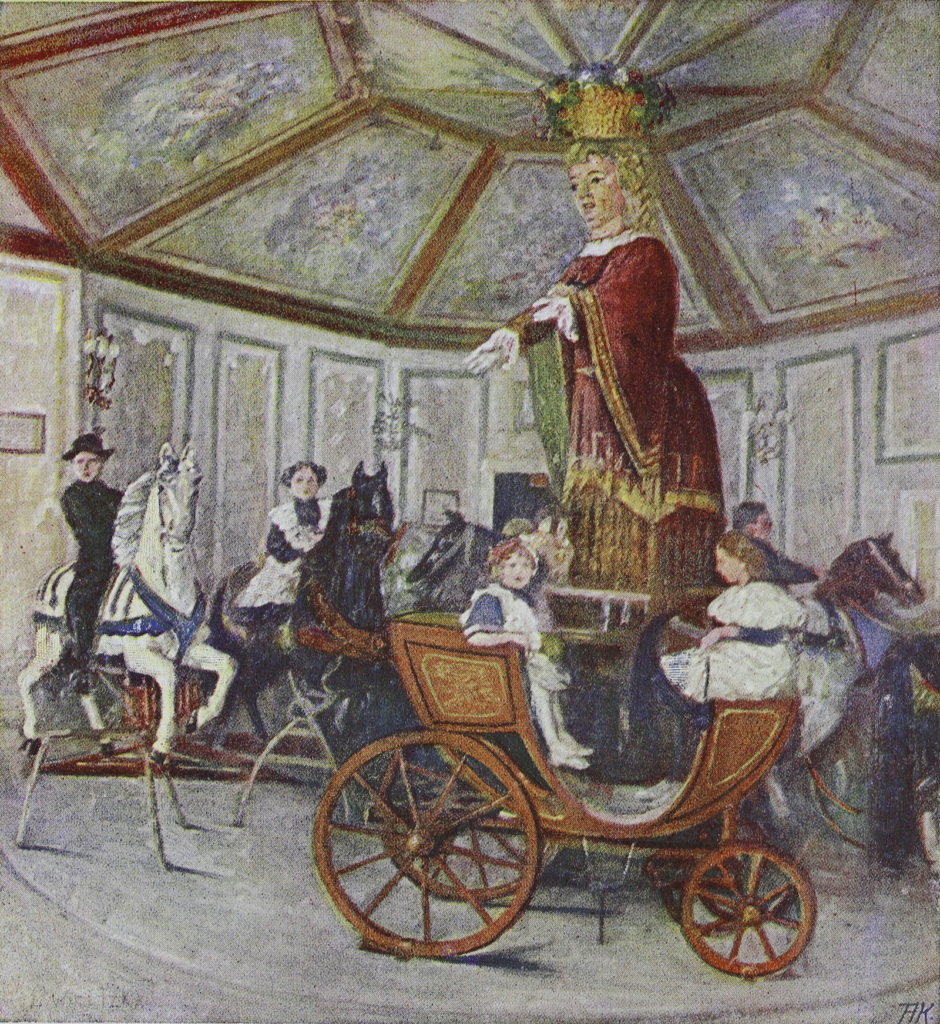
1871 was a decisive year for the Prater, as it was completely redesigned for the 1873 World’s Fair. The redesign mainly affected Wurstelprater and was designed by Lothar Abel. Roads and paths were asphalted, gas lighting was installed. Numerous huts and undertakings were also demolished – including the fireworks building of the Stuwer family, bringing their 100-year fireworks tradition to an end. In the course of the redesign, Wurstelprater was given the name Volksprater, which is still the official name for Wurstelprater today.
On May 1, 1890, the working class moved to Prater for the first time to celebrate the “Tag der Arbeit” (a holiday in Austria) with their families in nature – about 70,000 people were counted. This tradition continues to this day.
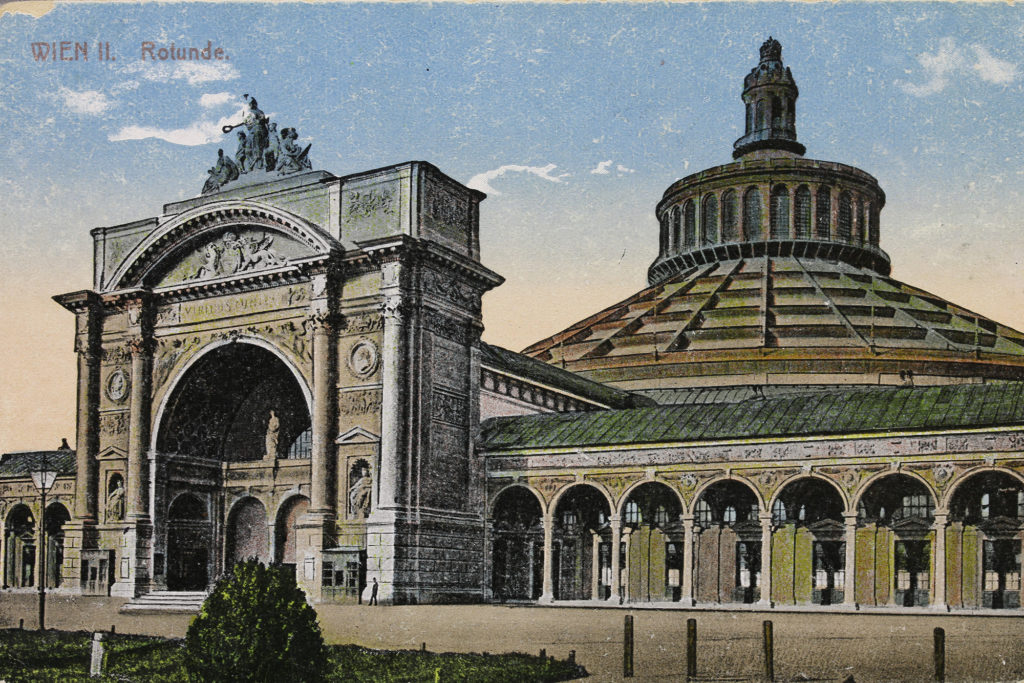

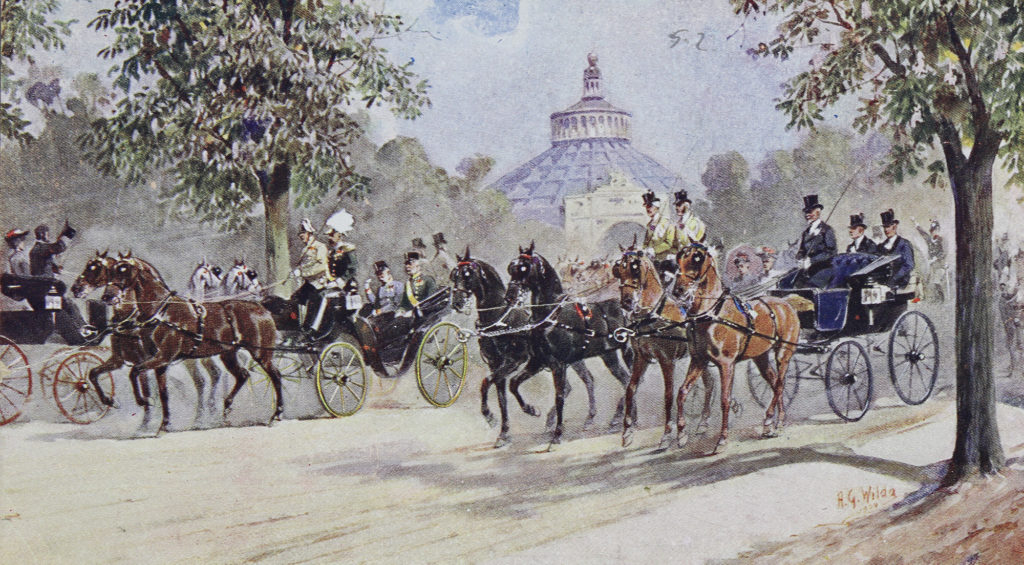
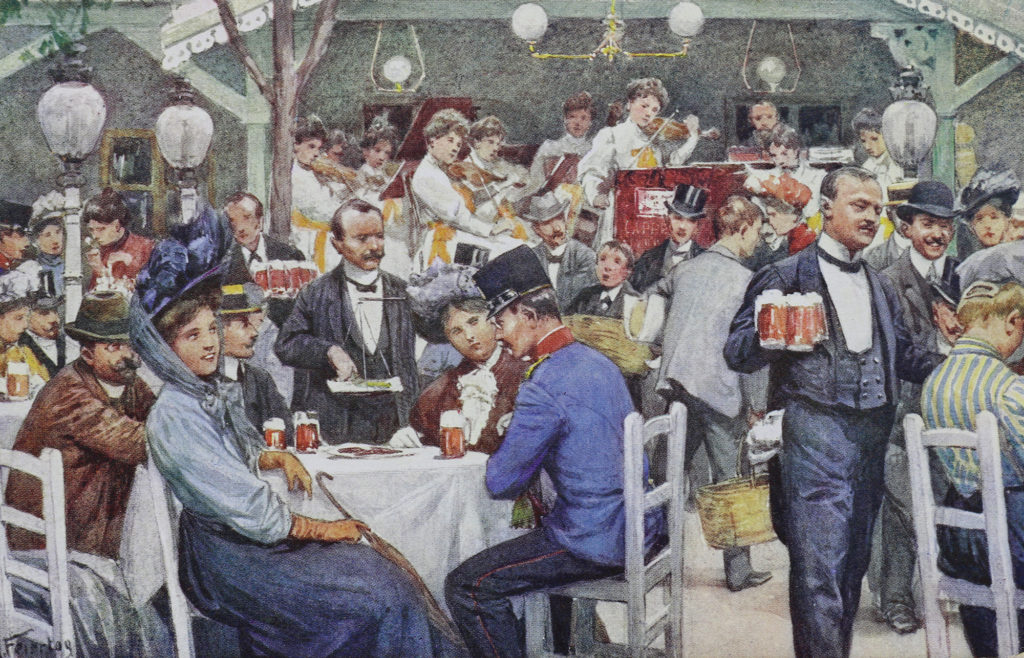
The Vienna Giant Ferris Wheel
In 1895, one of the first theme parks was opened in Kaiserpark: Venice in Vienna. The theatre director Gabor Steiner leased the area and, together with architect Oskar Marmorek, had water canals laid out, lined with fairground booths and various amusements. On the edge of his Venice, Steiner had the architects Walter Bassett Basset and Harry Hitchins build the Giant Ferris wheel.
In 1897, the Giant Ferris Wheel was ceremoniously opened to celebrate the 50th anniversary of the throne of Emperor Franz Josef I. The Giant Ferris Wheel was considered to be one of the most important attractions in the world. With its 30 carriages, it was considered one of the largest Ferris wheels in the world. Actually, Steiner only wanted to leave it standing for a few years, but it became far too successful for that – already in its first year of operation, the Giant Ferris Wheel had more than 200,000 passengers.
During World War II, the Giant Ferris Wheel was almost completely destroyed. After reconstruction, it was equipped with only 15 carriages because it was not certain to which extent its stability had suffered from the attacks. To this day, the Giant Ferris Wheel is privately owned, having been restituted to Steiner’s rightful heirs in 1953.
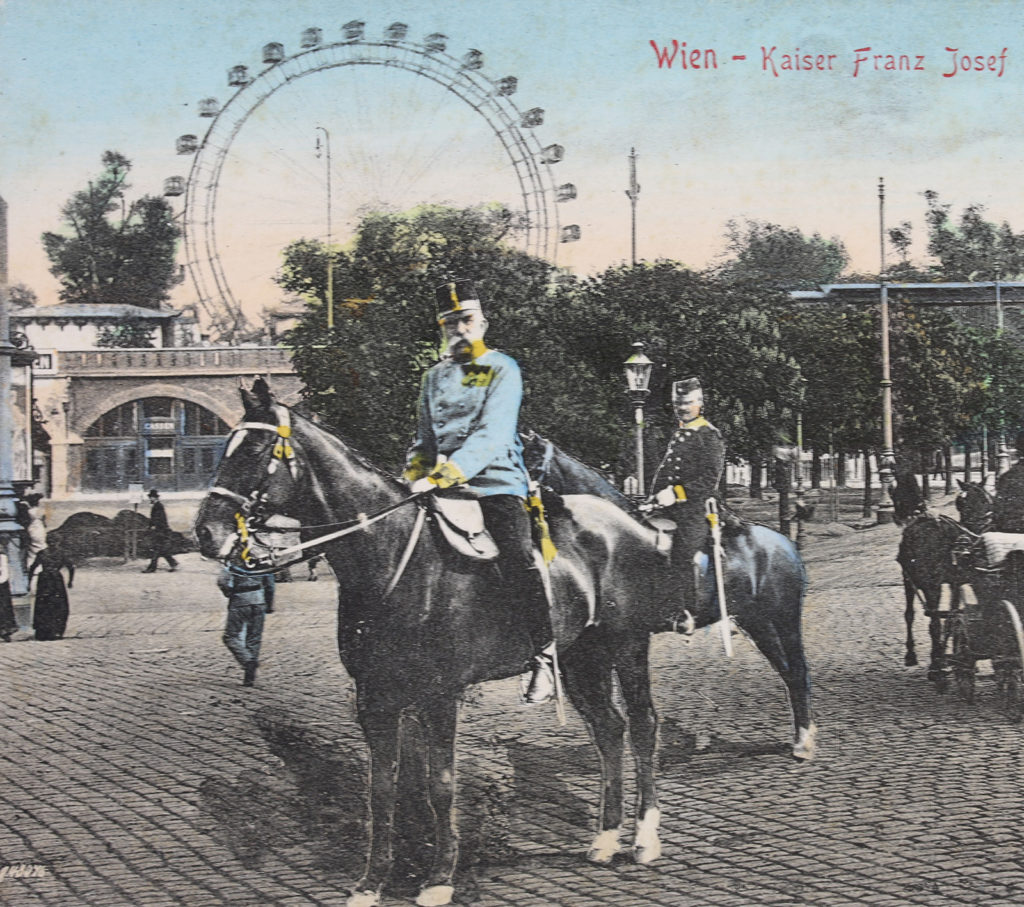
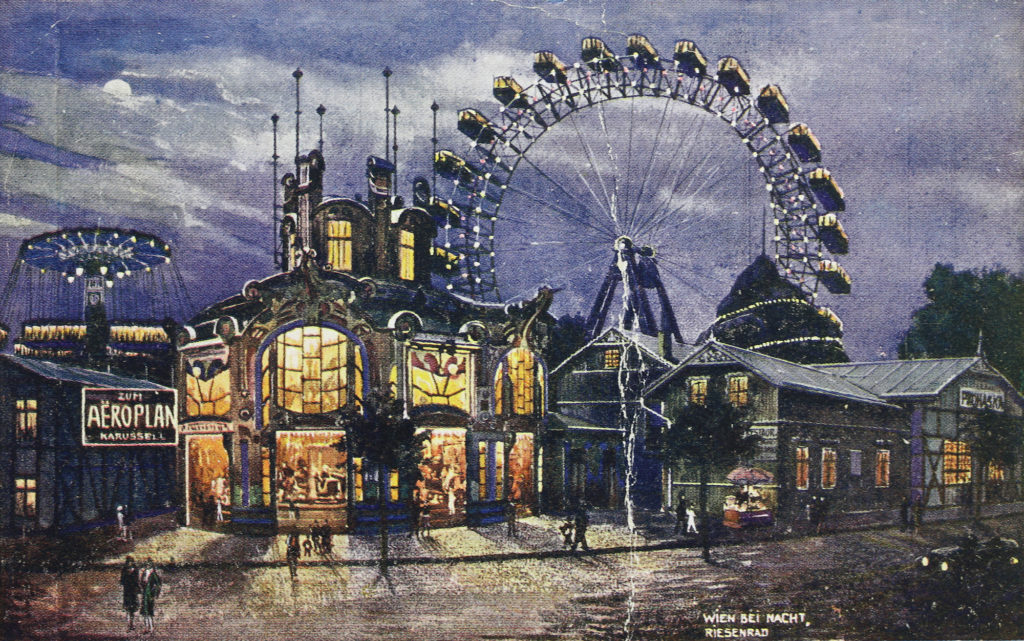
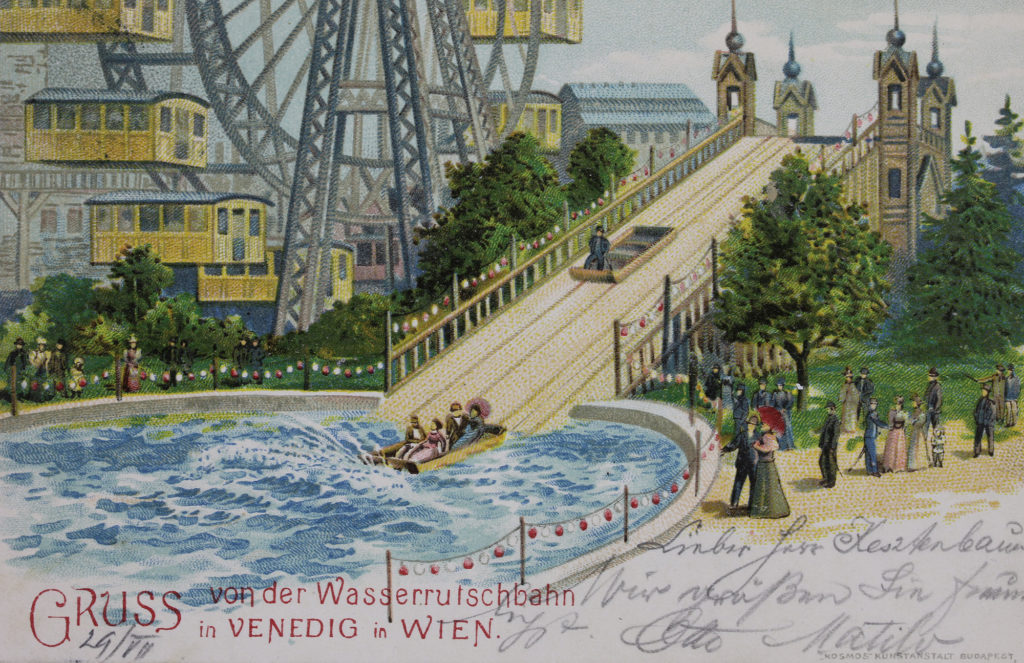
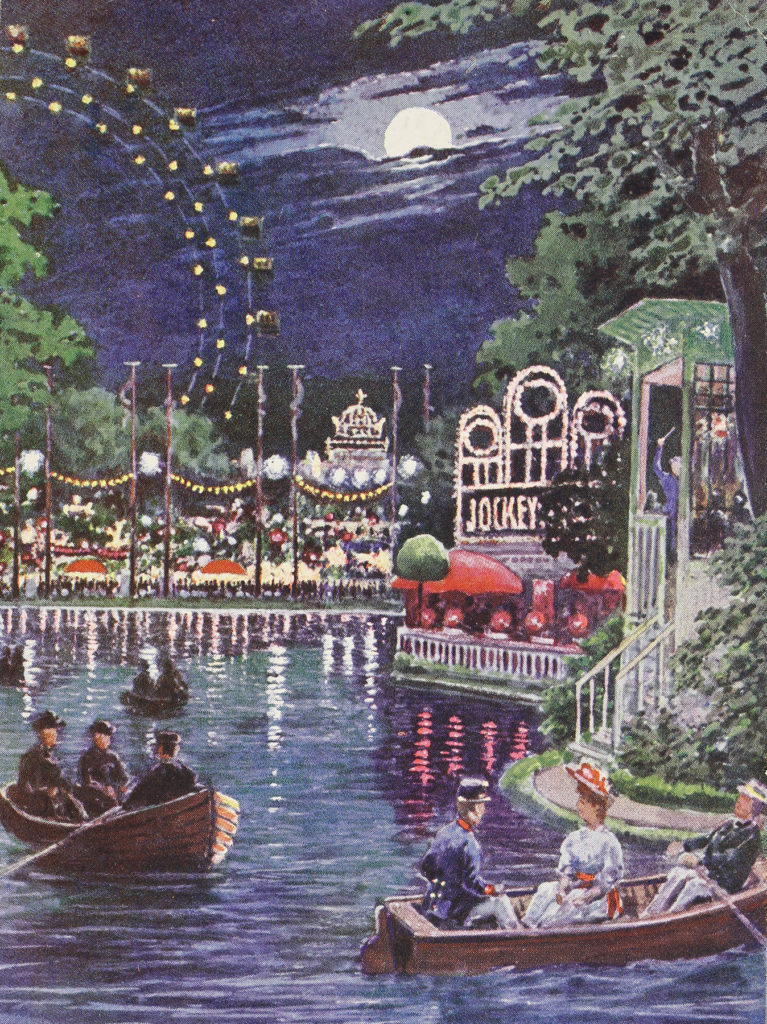
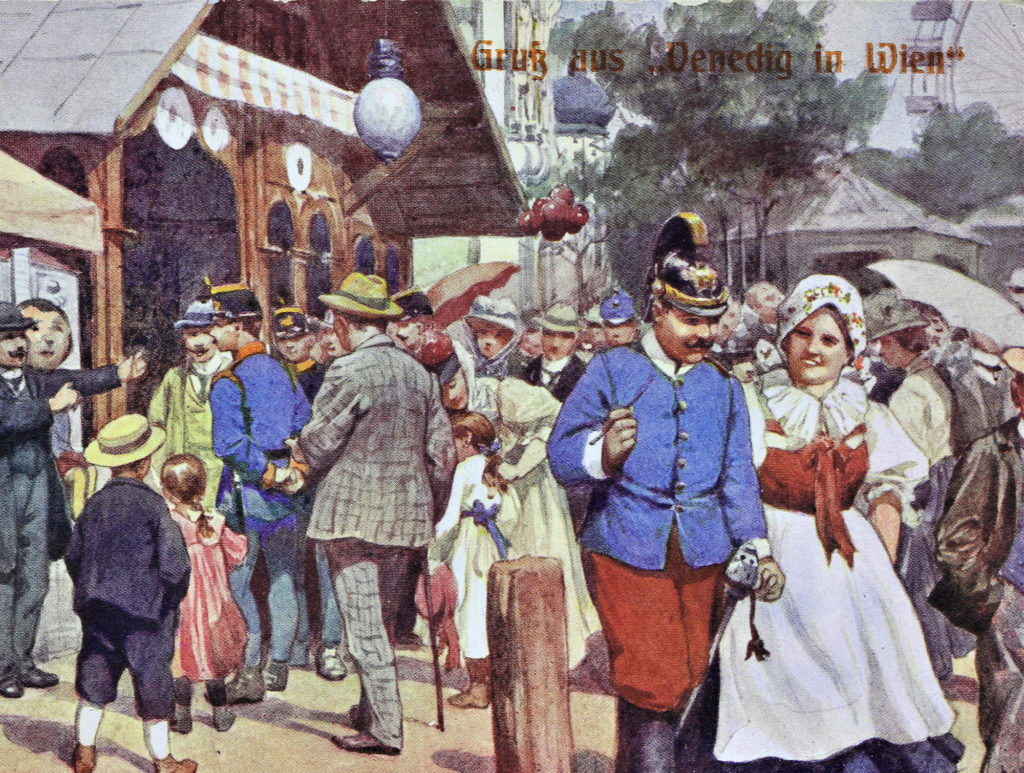
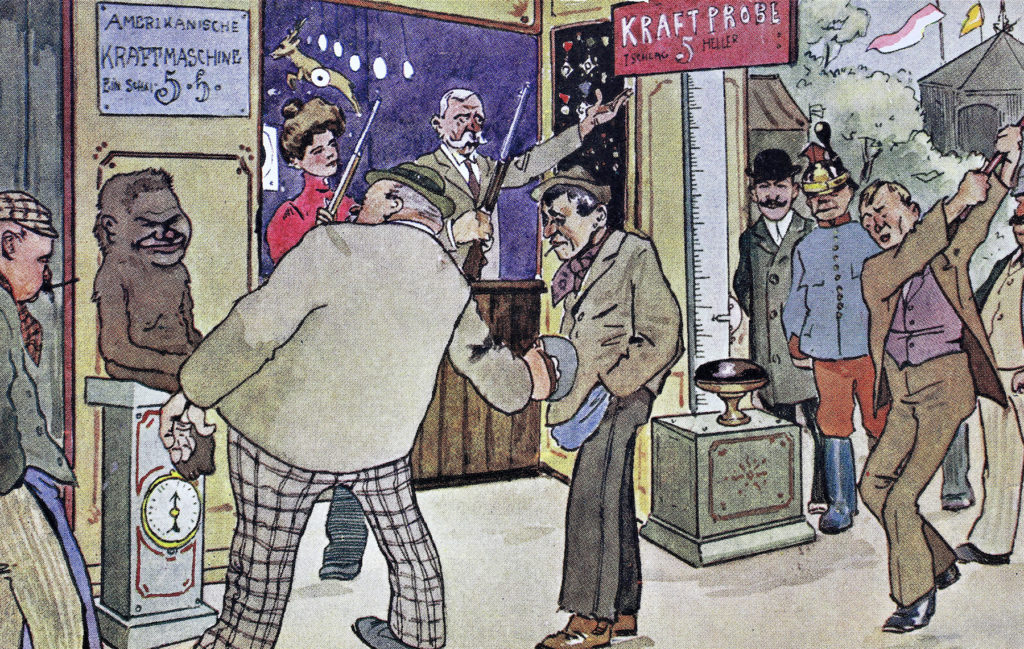
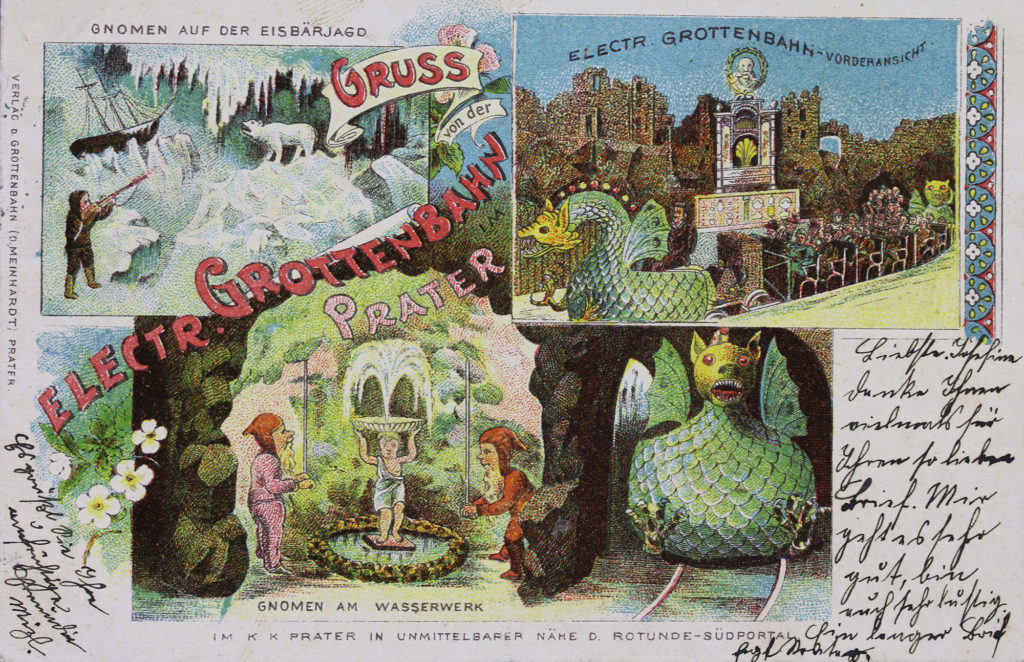
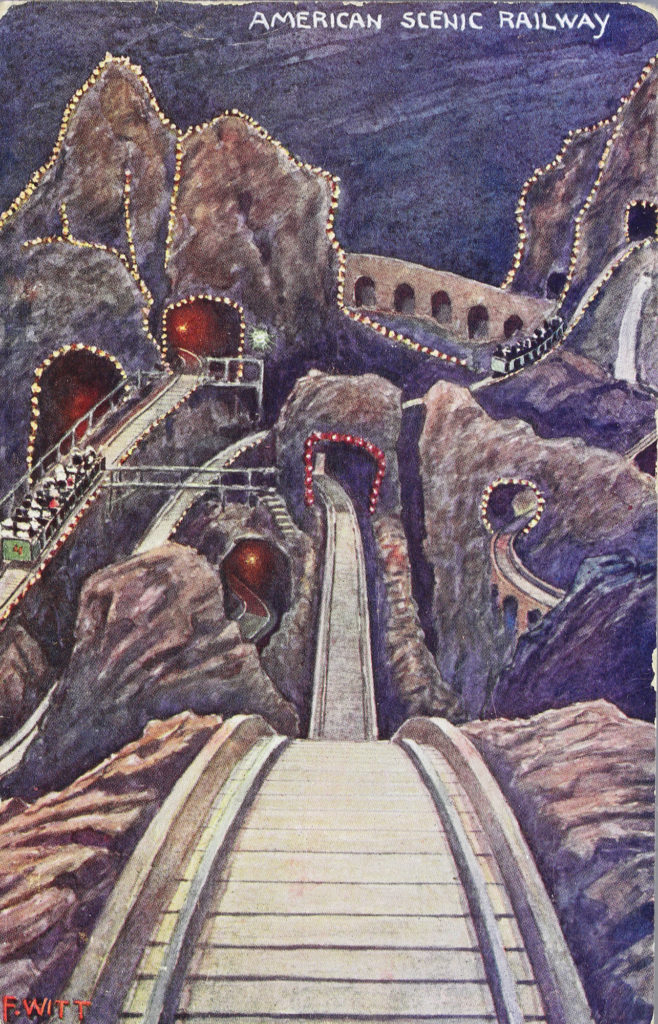
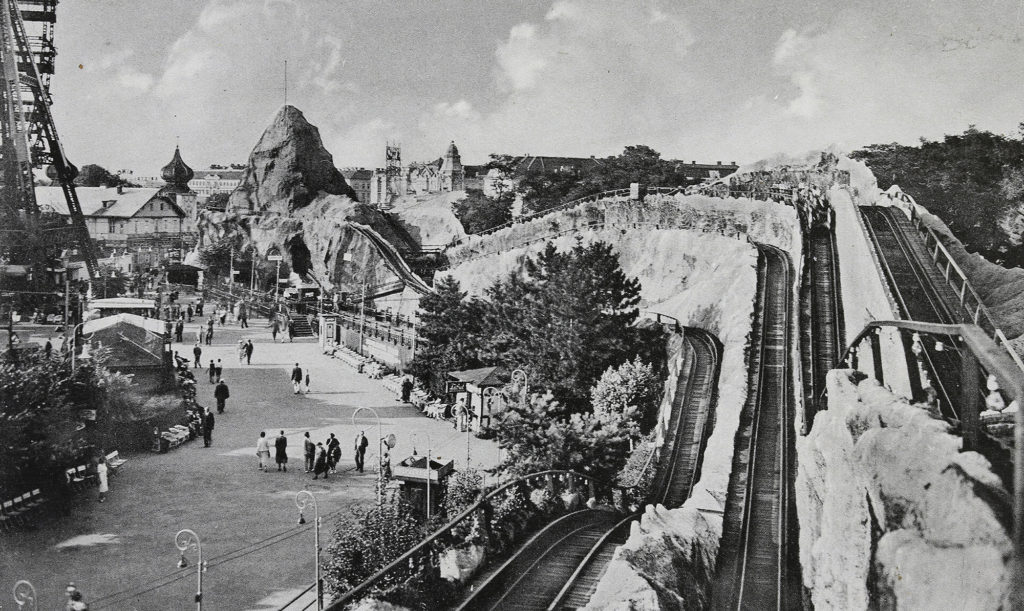
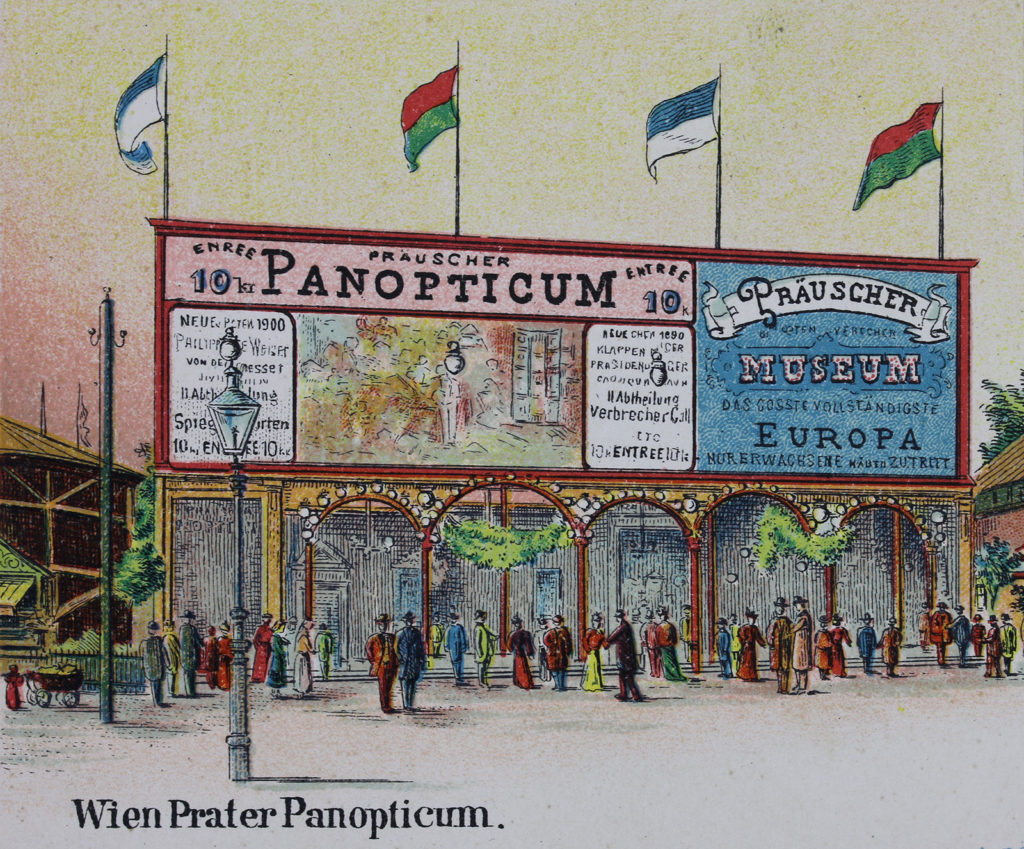
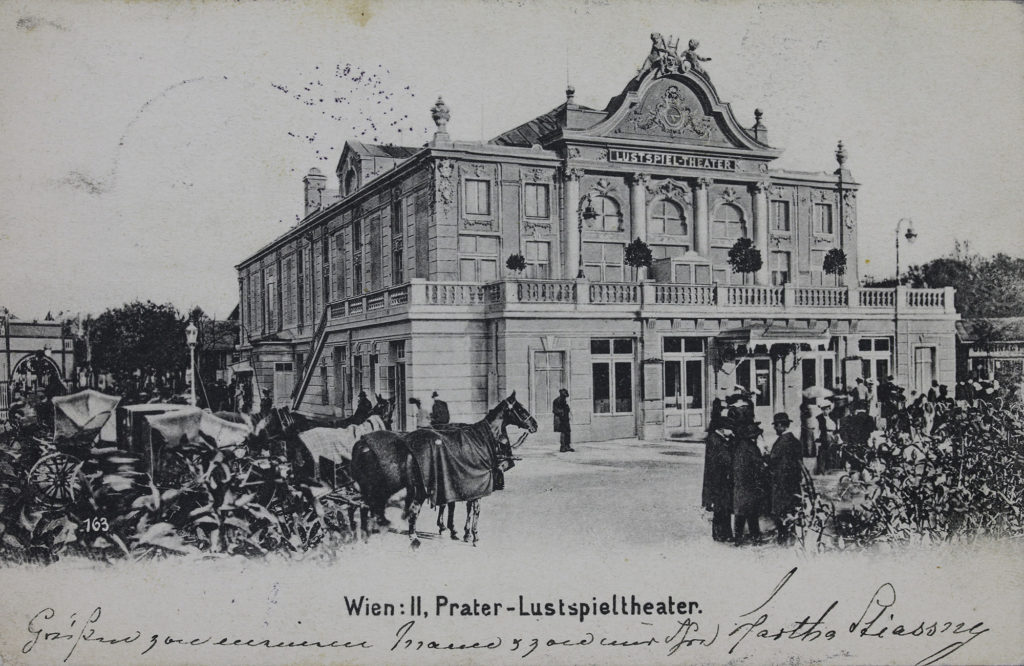
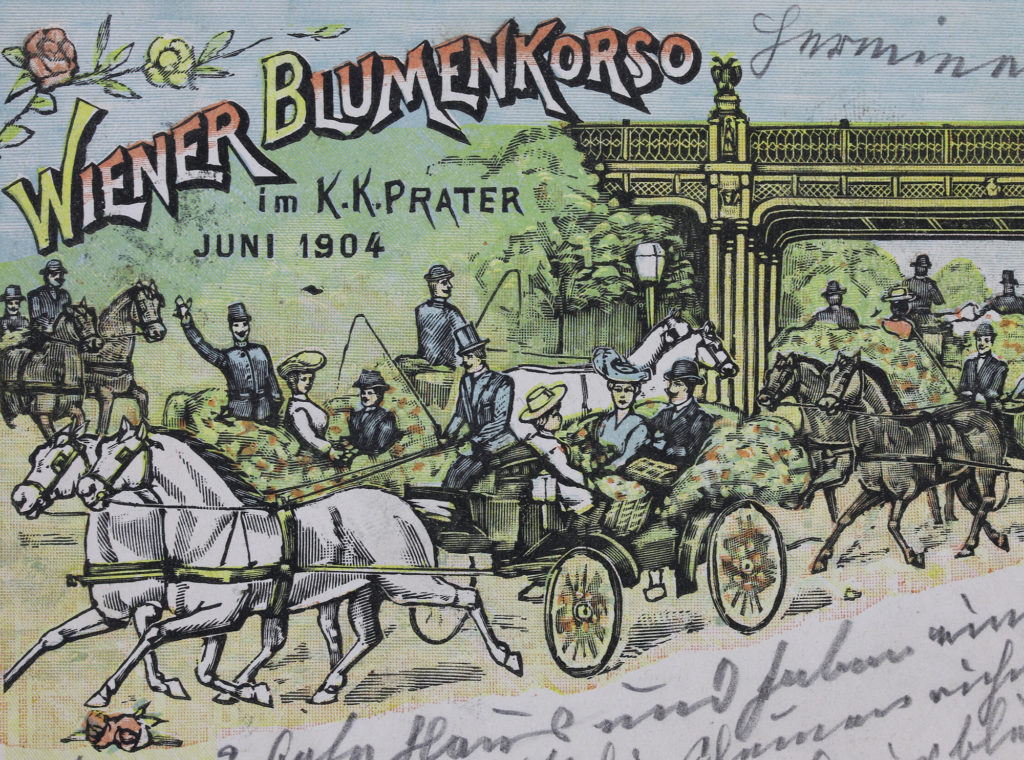
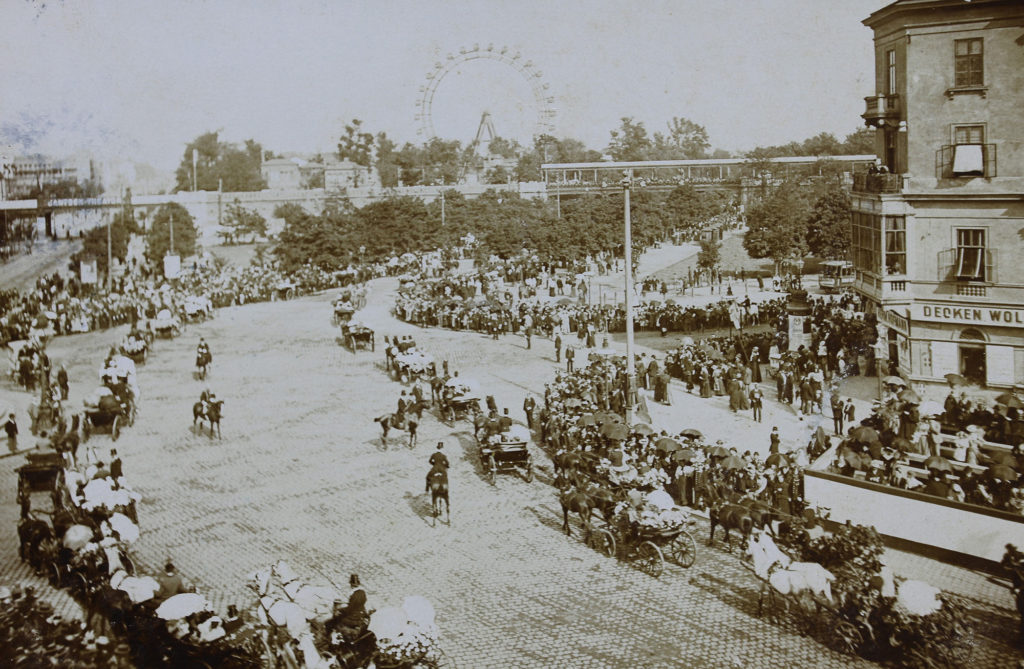
It’s Time For Something New
20th century
In 1901, the Venice of Vienna had its day and was drained. In its place, the International City was built, where visitors can walk through Spanish, Egyptian, and Japanese streets. A year later, it was completely transformed into the City of Flowers and the following year into the Electric City.
In 1904, five movie theaters opened one after the other in Wurstelprater. In 1909, the first elevated ride was built right behind the Ferris Wheel, in 1931 the Prater Stadium was opened, and in 1933, one of the world’s oldest ghost trains – the Geisterschloß (“Ghost Castle”) by Friedrich Holzdorfer – was established.
The Liliputbahn
The Liliputbahn went into operation for the first time in 1928. Tragically, the initiator of the project did not live to see its opening – he died four weeks before the event. Initially, the Lilliputbahn covered a distance of 2.5 kilometers, but in 1933, it was extended to 3.9 kilometers up to the current “Stadion” station.
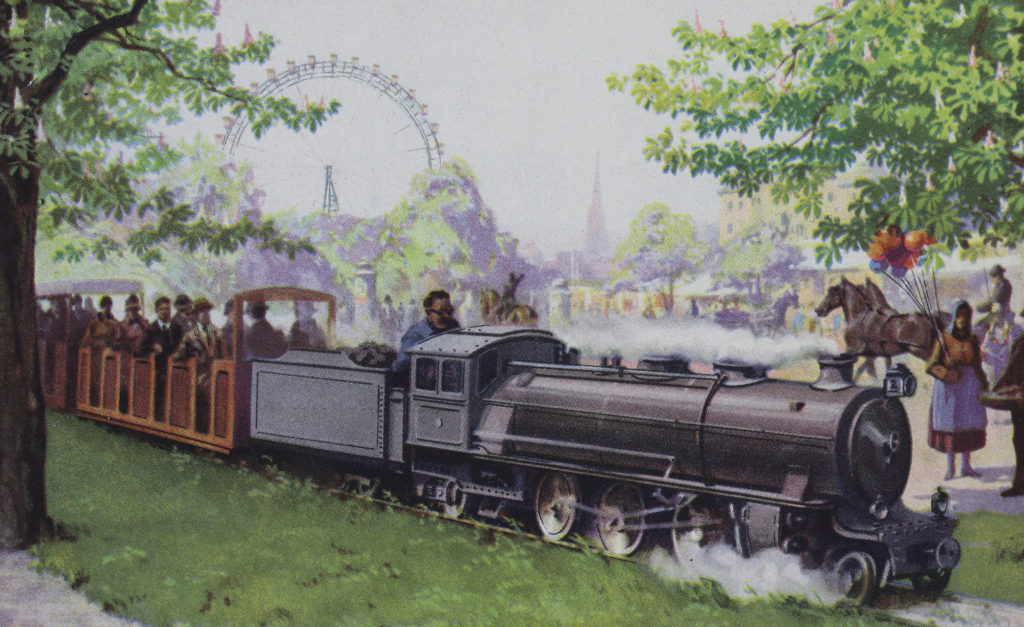
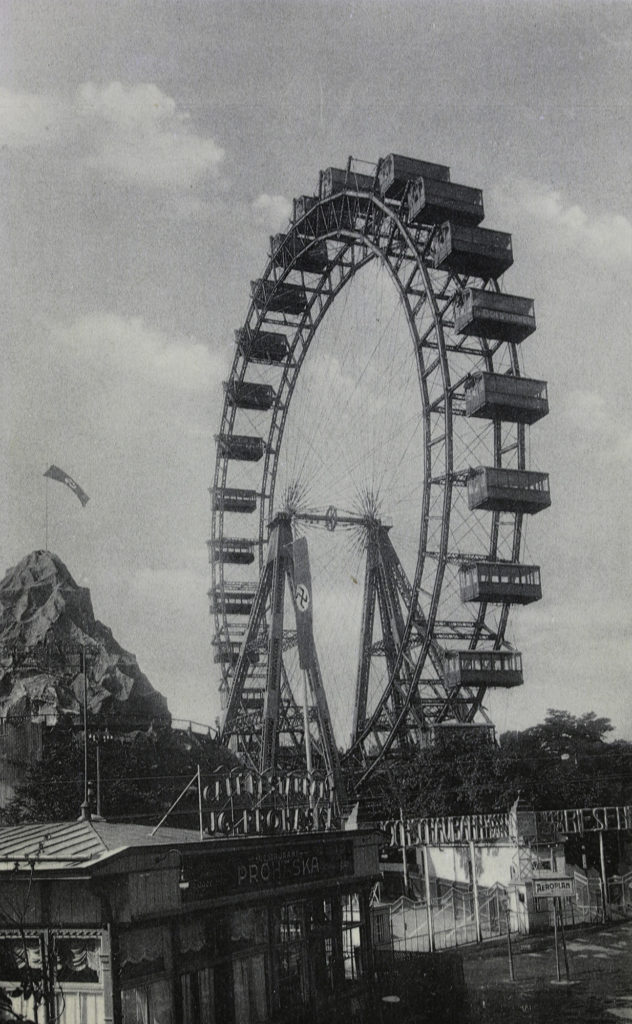
The 2nd World War
At the beginning of World War II, some Prater businesses were aryanized by the National Socialists – including the Giant Ferris Wheel. In the last days of the 2nd World War – at the beginning of April 1945 – the Wurstelprater was largely destroyed by bombs and fires during the Battle of Vienna. Only 18 buildings and attractions remained largely unscathed.
After the end of the war, the City of Vienna dissolved all existing leases and reorganized the inventory conditions – in accordance with the denazification laws. The decision was made to rebuild.
A New Beginning
In order to finance the reconstruction of Wurstelprater, donations were collected in 1946 under the motto “W W W- Wieder Wiener Wurstelprater” (which translates to “Vienna Wurstelprater Again”). At Pentecost 1947 the Giant Ferris Wheel already turned its rounds again, but it would take some time before it became as popular as it had been before World War II.
In the middle of the 20th century, the first pinball machines and gambling machines were installed in Wurstelprater. In 1964, the planetarium near the Giant Ferris Wheel was reopened after its predecessor had been destroyed in the World War. In the 1970s, the first computer games came to Wurstelprater and modern hydraulics and pneumatics made the construction of new rides possible.
New Is Not Necessarily Better
21st century
On the occasion of the European Football Championship in 2008, the buildings around the Riesenradplatz were redesigned. The new design by architect Emmanuel Mongon is not without controversy – the facades are designed in 2D optics 1900s style. They house catering establishments, various stores, and attractions.
In the same year, Austria’s largest club – the Praterdome – opened on the edge of Riesenradplatz.
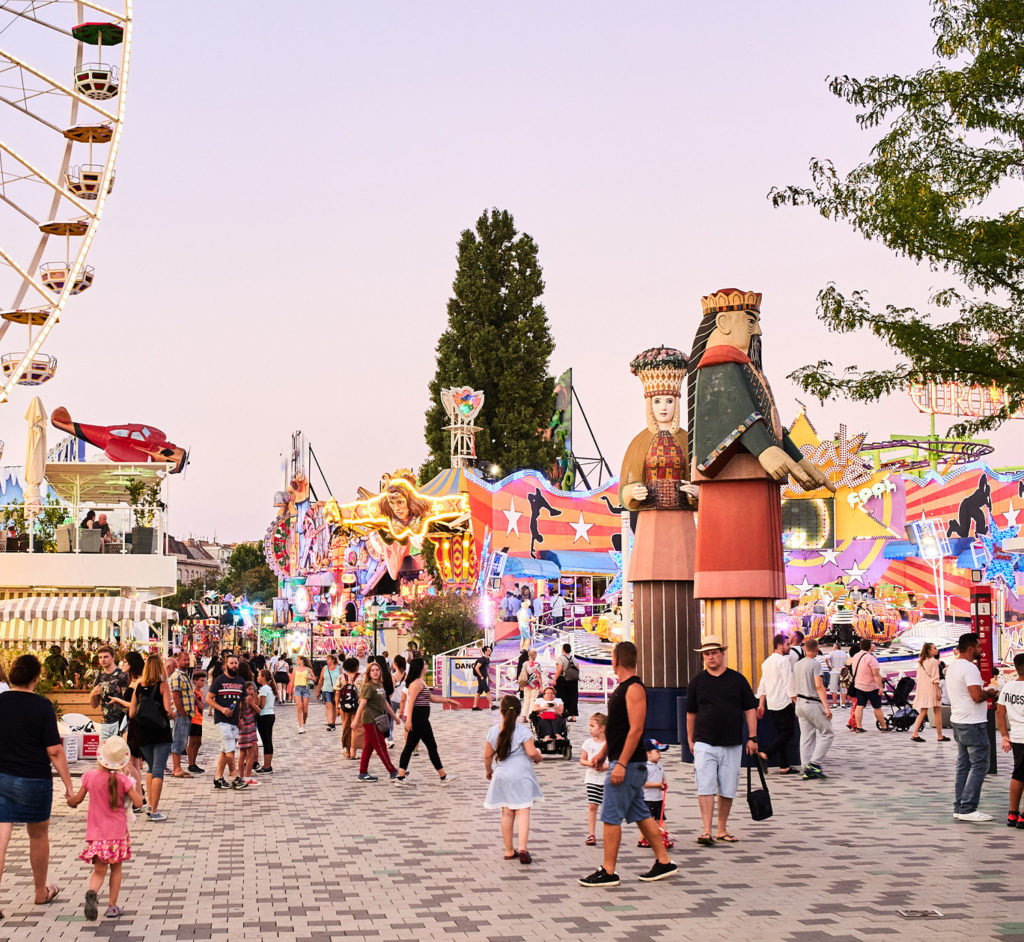
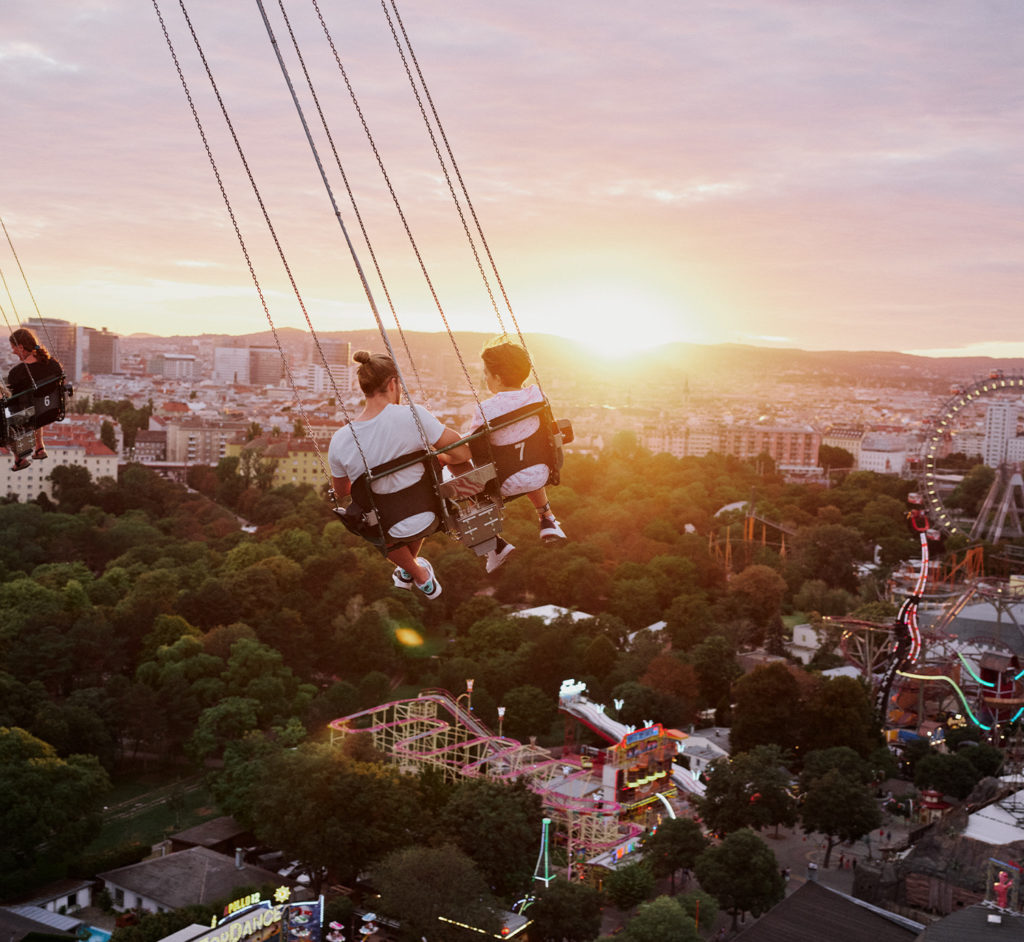
And Today?
Every year more, new, and exciting attractions are built in Wurstelprater. In recent years, more and more emphasis has been placed on sustainability, especially in the catering sector. Despite all the changes, developments, and innovations, Wurstelprater has never lost its charm, diversity, and whimsicality.
In our gallery you can see the Wurstelprater as it looks today – colorful, diverse, and with lots of Viennese charm.
If you seek more impressions of what Prater and Wurstelprater used to look like, we recommend a visit to the website prater.topothek.at. Here you will find an impressive collection of photos and drawings, which are even locally assigned.